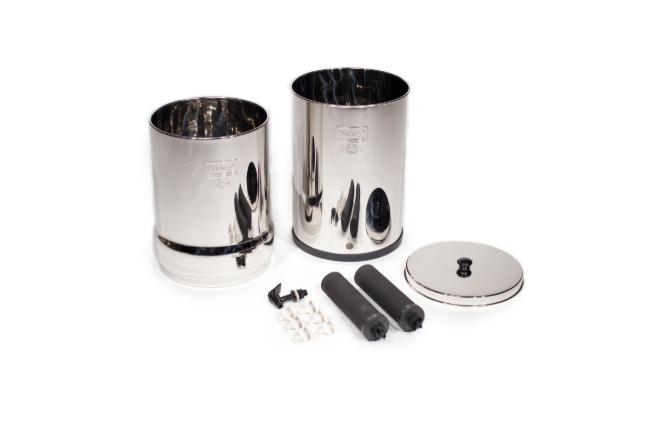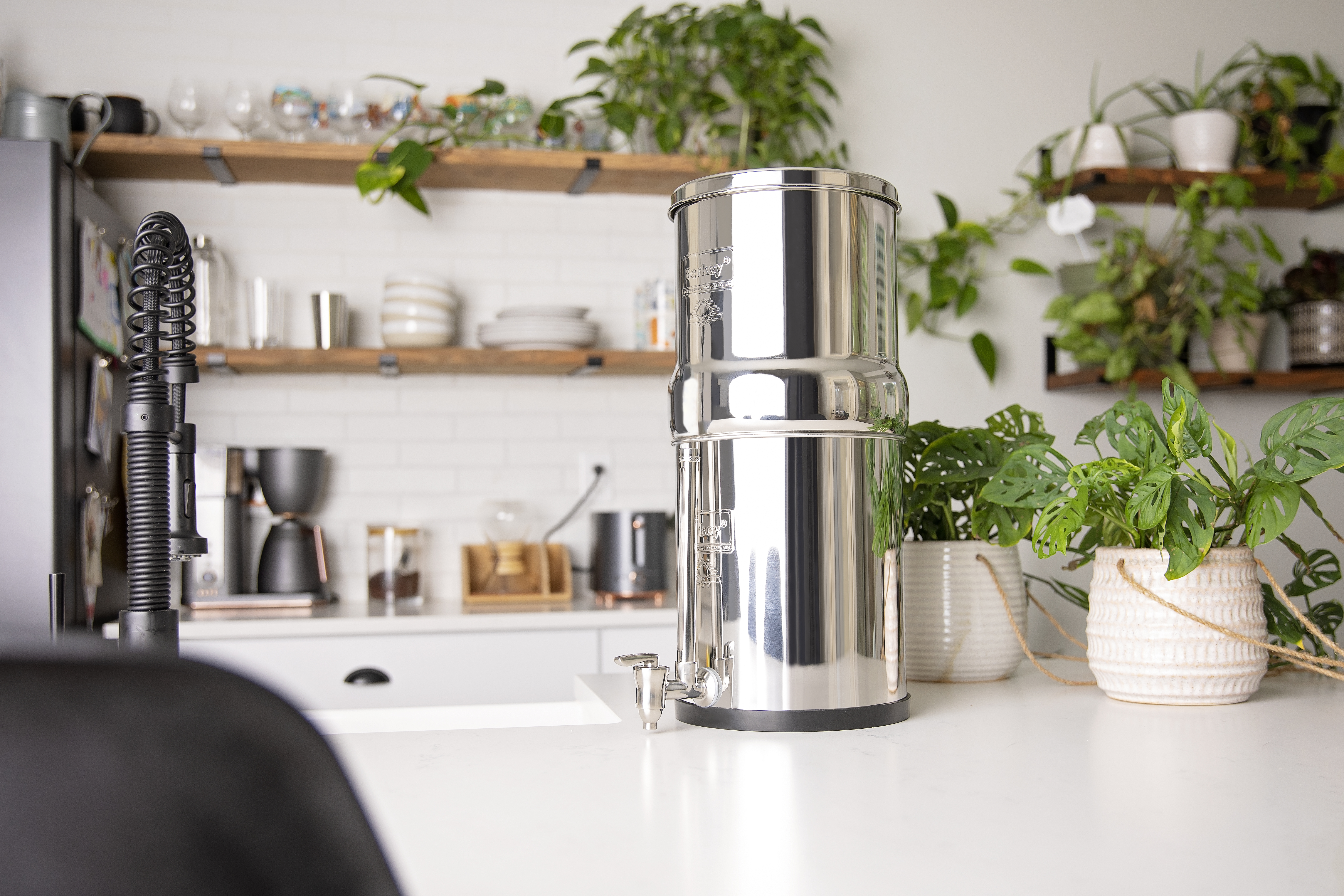Aluminum Oxide is media that is used in the Berkey water filter PF line of filters that remove fluoride from the water. This article provides some additional information and insight into what exactly aluminum oxide (or alumina) actually is.
Aluminum Oxide is an inert compound of aluminum and oxygen and has been utilized in removing fluoride from water since 1936. It is a naturally occurring, non-toxic, and also known as corundum. Rubies and Sapphires are an example of gem quality corundum. The research scientist Corrin (1963a; 1963b) noted that aluminum reacts with water but is not able to do so when coated with inert aluminum oxide. Aluminum oxide is no more toxic or water-soluble than are rubies and sapphires.
The fact that alumina is a compound of aluminum and oxygen should not be cause for concern as the properties of the compound differ greatly from the plain components. For example, pure aluminum reacts so readily with water that, according to the laws of chemistry, the aluminum shell of an airplane should actually dissolve in the rain. However, when aluminum is placed in the atmosphere, a thin layer or aluminum oxide forms on the metal surface and acts like a protective, rust-resistant shield. Aluminum oxide is the most stable form of aluminum known and it is not soluble in water. An analogy would be table salt (NaCl), a compound of sodium and chlorine, each by themselves a harmful substance, but together is something the human body needs. Likewise, both oxygen and hydrogen are highly flammable, yet a compound of both creates water (H20) which is used to extinguish fire. As such, Aluminum oxide was taken off the United States Environmental Protection Agency's chemicals lists in 1988.
When water molecules come in contact with aluminum oxide, the aluminum and oxygen atoms on the surface move apart -- in some cases separating by more than 50 percent compared to their normal molecular positions. As a result, when the outer layer of aluminum oxide gets hydrated or wet, its structure changes just enough to become chemically inert and thus unable to react rapidly with additional water molecules or atmospheric oxygen. This change in molecular structure is why aluminum oxide metal resists corrosion.
BIOCOMPATIBILITY OF ALUMINUM OXIDE
There are no known bodily functions that react with aluminum oxide, hence it has excellent biocompatibility. Aluminum oxide is a well-proven, biocompatible ceramic that has been used as a dental porcelain pigment for some 60 years and as a ceramic restoration substructure for 25 years. It has a variety of orthopedic uses such as hip and knee joints where it has demonstrated excellent biocompatibility over the long term.
Aluminum oxide is utilized in sunscreen and cosmetics such as blush, lipstick, nail polish, and many types of sandpaper. It is a major component of the cue tip "chalk" used in billiards and the powder is used in some CD/DVD polishing and scratch-repair kits. Its polishing qualities are also why it is used as a base in toothpaste. Some other applications include use as a dosimeter for radiation protection for its optically stimulated luminescence properties, in addition to insulation for high-temperature furnaces are often manufactured from aluminum oxide.
WHY DOES ALUMINUM OXIDE APPEAR TO BE THE SAME AS PURE ALUMINUM WHEN WATER IS TESTED FOR ALUMINUM CONTAMINATION LEVELS?
When laboratories test for metal contamination in water it is first necessary to break apart the oxidized metal ions from their oxygen component. Then an ion count is taken. This is the same for Aluminum oxide. The oxygen is separated from the pure aluminum molecules so that the aluminum ions can then be counted. It is for this reason that laboratory tests do not distinguish between aluminum oxide and pure aluminum in their test water. In other words, such tests generate a false positive by separating the aluminum from the oxygen and then reporting the amount of pure aluminum in the sample.
However, as illustrated above, pure aluminum and aluminum oxide have vastly different characteristics. Pure aluminum is water-soluble, it is highly reactive and it is associated with negative health effects. By contrast aluminum oxide is not water-soluble, is inert, very stable, and not associated with any known negative health effects.
Resources
https://www.ncbi.nlm.nih.gov/pmc/articles/PMC2782734/
https://news.stanford.edu/pr/00/aluminum511.html
https://www.lenntech.com/periodic/water/aluminium/aluminum-and-water.htm
https://vitanorthamerica.com/support/user-guides/faqs/biocompatibility-of-aluminum-oxide/
https://en.wikipedia.org/wiki/Aluminium_oxide
Physical constants of inorganic compounds, in: David R. Lide (Ed.) CRC Handbook of Chemistry and Physics. Boca Raton: CRC Press, 1994.








